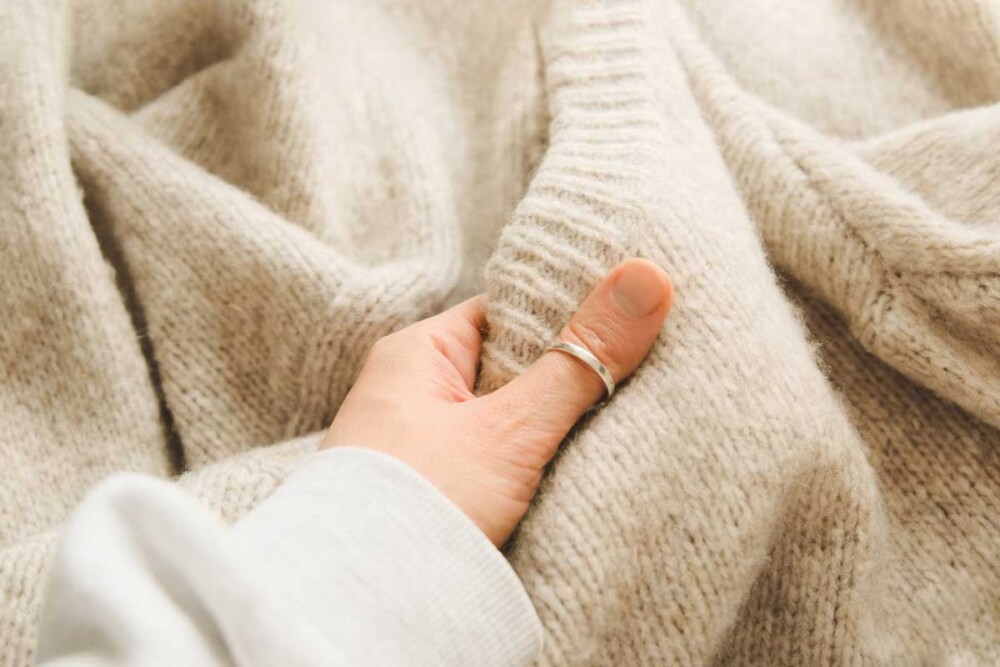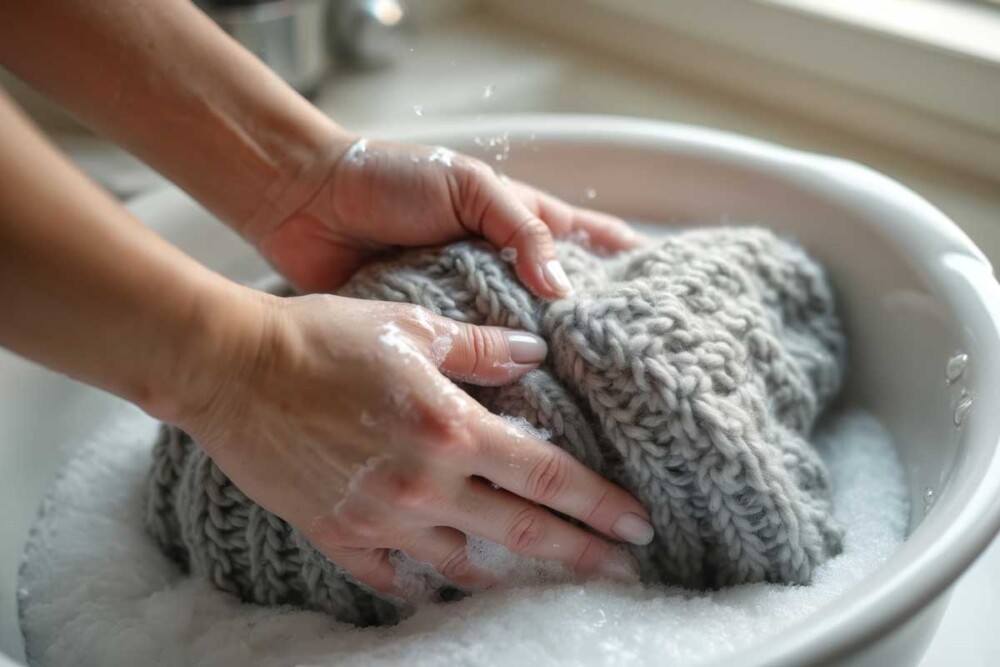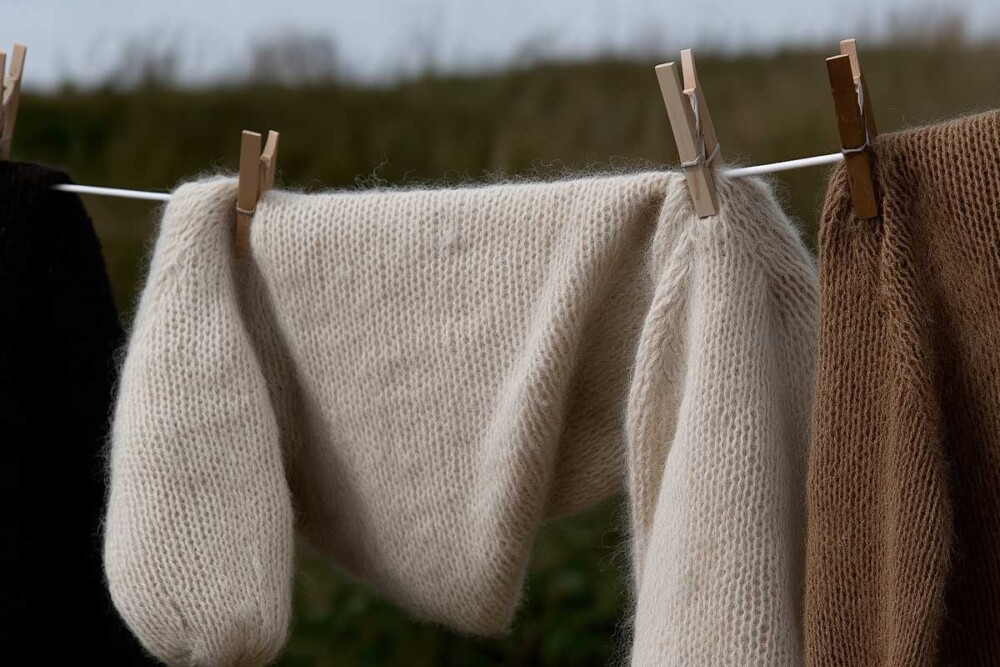Wool fabrics represent one of the most versatile and appreciated excellences in the textile world. Elegant, durable and naturally thermoregulating, they are perfect as coat fabrics, for high-quality garments and refined furnishings. Their maintenance requires specific skills: washing too hot, drying incorrectly, or ironing aggressively can compromise their shape and softness. Here are Manifattura Foderami Cimmino‘s tips on how to properly stain, wash, dry, iron, and store wool fabrics.

Why wool fabric care is essential
Wool fabrics are composed of natural fibers that react sensitively to heat, moisture, and chemicals. Unlike synthetic fibers, wool does not tolerate overly aggressive treatments. Proper care means preserving its original structure, shine and softness.
For companies and laboratories that process this material, following the correct maintenance procedures is a concrete advantage: damage is avoided, waste is reduced and the life of the final product is increased, improving customer satisfaction.
The characteristics that make wool delicate
Wool is made of keratin, a protein that makes it elastic and resistant, but also sensitive to temperature changes. When subjected to washing too hot or excessive movement, it tends to felt, losing volume and softness. This phenomenon, called felting, is irreversible and can compromise wool clothing fabrics.
What happens if it is washed or dried the wrong way
Incorrect treatment not only alters the appearance of the fabric, but can cause shrinkage, deformation, and color loss. For this reason, those working in the textile sector must have a thorough understanding of the washing and drying techniques best suited to wool, avoiding home-made or improvised methods. The finest wool fabrics, such as Vigogna Pura Lana Ileana, can only be dry washed and ironed at low temperatures.

De-stretching wool fabrics: safe methods
De-stacking wool requires delicacy and speed. The earlier you do it, the better your chances of getting rid of the stain without damaging the fibers. Not all products or techniques are suitable: some may leave streaks or alter the color of the fabric. It is essential to act carefully, evaluating the type of wool and the nature of the stain.
Most common types of stains
The most difficult stains to remove on wool fabrics are those of fatty (oil, butter), tannic (wine, coffee) or protein (sweat, blood) origin. Each requires a different approach. For example, oily stains are treated with mild detergents and cold water, while wine or coffee stains require pre-treatment with specific pH-neutral solutions.
How to intervene without damaging the fibers
The secret is to dab, never rub. A clean, slightly moistened white cloth is the best ally for absorbing the stain. If necessary,
Products to prefer and mistakes to avoid
It is best to avoid bleach, solvents and ammonia, which destroy the proteins in the fiber. Neutral or wool-specific cleaners are the safest choice. Before treating a large surface area, it is always advisable to test the product on a small corner of the fabric.

Professional washing of wool fabrics
Washing wool properly is one of the most delicate stages of treatment. Hand washing remains the safest method, but with the right programs and detergents you can also achieve excellent results with industrial machines. The goal is to clean without stressing the fiber.
Hand or machine wash: when and how
Hand washing is ideal for some wool garments, but only if stated on the label. Use cold or warm water (not above 30 °C) and a specific detergent. For machine washing, it is preferable to choose programs “wool” that limit the spin and keep the water temperature constant.
Ideal temperature, detergents and soaking times
Prolonged soaking can over-relax the fibers. Ten minutes is enough. Rinsing should be generous and with water of the same temperature to avoid thermal shock.
How to avoid felting
To prevent felting, avoid sudden movements and temperature changes. The wool should be washed gently, in warm water and with neutral detergents. It is also advisable to rinse without twisting the fabric, letting the water run to remove the soap.

Wool drying and moisture management
Drying is a crucial step: a mistake can defeat even the best wash. Wool should not be wrung out, but treated carefully to avoid warping or hardening.
After washing, remove excess water with a towel and lay the fabric flat, away from the sun and heat sources. Slow and uniform drying allows you to maintain the original shape and natural softness of the fibers.
Techniques for drying wool without ruining it
The best method is to place the fabric on an absorbent cotton sheet, changing it if necessary. The air must circulate freely, to promote a gradual loss of humidity.
Common mistakes to avoid
To dry wool, you absolutely must avoid dryers, radiators and direct sun. These heat sources stiffen the wool, causing it to shrink and lose its shine. Even spinning too hard can ruin the structure of the yarn.
How to tell when fabric is ready to be stored
The fabric is dry when fresh but not damp to the touch. Before folding or hanging it, it is advisable to let it rest for a few hours, so as to allow the fibres to stabilize and resume their natural shape.

Ironing and finishing of wool fabrics
Ironing is a step that completes the maintenance cycle, but it must be done with caution. Too much heat or pressure can leave permanent marks. Correct ironing, on the other hand, restores shape and uniformity to the fabric, improving its presentation.
Correct temperature and manner for ironing wool
Set the iron to medium temperature (between 120 and 150 °C) and always use the steam function sparingly. Avoid ironing directly on the surface of the fabric, especially if it is dark or very thin, to prevent unwanted shine.
Use of interposed cloth and steam
The damp cloth between iron and fabric protects the fibers and distributes heat evenly. Steam, on the other hand, softens the fiber and facilitates ironing, but must be applied remotely to avoid saturating the fabric.
How to maintain softness and sagging fabric
After ironing, let the fabric cool flat. This allows the fibers to fix in the new position, preserving the natural softness and “drop” typical of quality wool fabrics.

Long-term storage of wool fabrics
Proper storage of wool is essential to keep it in perfect condition over time. The ideal environment is dry, ventilated and free of direct light. Moisture can promote mold and odors, while prolonged exposure to light can discolor the fabric.
Ideal conditions: temperature, light and humidity
The ideal temperature for storing wool is between 15 and 20 °C, with a controlled humidity between 40% and 60%. In warehouses or showrooms, it is useful to maintain constant ventilation to avoid air stagnation.
How to fold or hang fabrics
Wool fabrics, such as those available on the Cimmino shop, must be folded regularly, alternating the direction of the folds. For packaged garments, it is best to use padded hangers and breathable sheets.
Prevent moths and odors during storage
Moths are the main risk for wool fabrics. It is advisable to use lavender, cedarwood, or bay leaf bags as natural repellents to store fall and winter wool fabrics. Periodic checks ensure that fabrics remain clean and ready to use in each season.
FAQ- Frequently Asked Questions about Washing and Maintaining Wool Fabrics
To machine wash wool, select the program “delicate” or “wool” with cold water and light spin. Use a specific detergent and do not exceed 30 °C to avoid felting.
No, the dryer tends to shrink and stiffen the wool. Better to opt for natural drying, flat and away from direct heat sources.
Dab immediately with a clean cloth and cold water. If the stain persists, use a neutral wool-specific cleaner and rinse gently.
Keep the temperature constant and use only wool cleaners. Avoid hot water and sudden movements during washing and rinsing.
Store them in a cool, dry place, preferably folded into breathable bags with natural repellents such as lavender or cedar to keep moths away.
The wool should be ironed at a temperature between 120 and 150 °C, with a damp cloth between the iron and the fabric to avoid shine or burning.
A good wool fabric has a compact weave, a soft hand and a slight elasticity. Certified, high-quality wools are available at Cimmino Shop, ideal for professional and long-lasting use.



